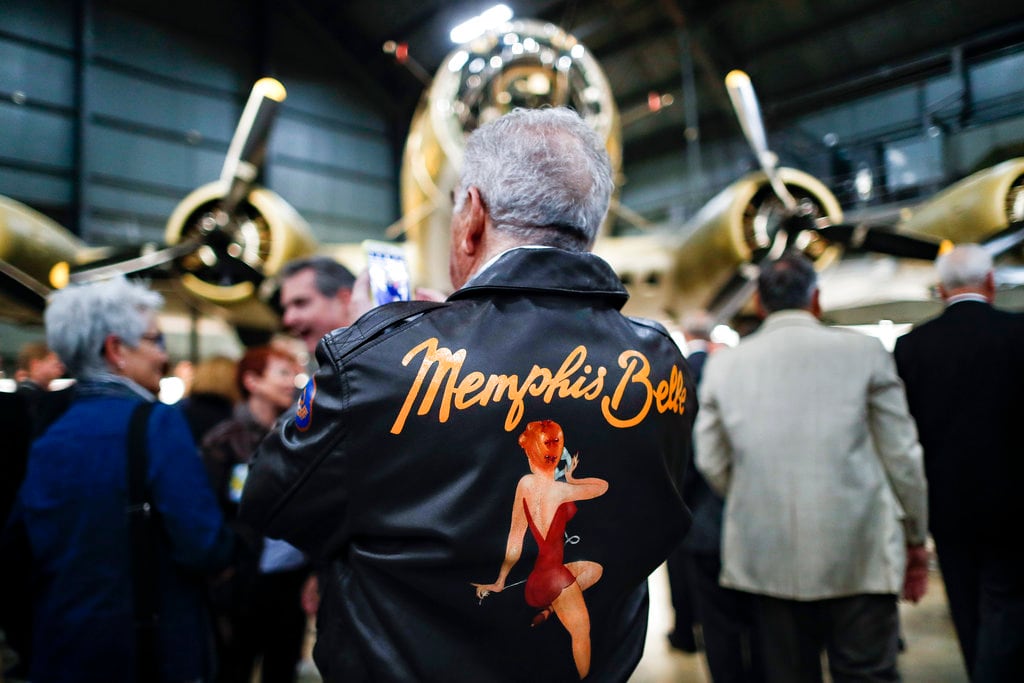DAYTON, Ohio — The French and the Americans are working together again on a D-Day project — this time to give museum visitors the opportunity to travel back in time and experience the milestone World War II invasion 75 years later.
From the viewpoints of a paratrooper snagged on a church steeple or a soldier firing a bazooka at a German tank, visitors at Ohio’s National Museum of the U.S. Air Force can soon be transported to Normandy, where the June 6, 1944, attack happened.
Using tablets called HistoPads, museumgoers will be able to move a slider to contrast current views of historic sites with re-creations of them in the past. They can tap on icons to see animation, as well as video footage, photos and maps from 1944.
The new way of learning about D-Day is set to launch Monday as part of the museum's D-Day commemorations, which will also include paratroopers dropping from a vintage C-53D dubbed "D-Day Doll," exhibits and movies.
RELATED

Codenamed Operation Overlord, D-Day saw some 156,000 U.S., British and Canadian forces landing on five beaches along a 50 mile (80 kilometer) stretch of France's coast, supported by thousands of ships, landing vessels, planes and gliders, and with inland help from French resistance fighters.
The Ohio museum, near Dayton, will be the first in the U.S. to use the HistoPad, although there are talks of expanding around the country, according to Histovery, the French company that developed it.

The tablets are among new technology increasingly in use at museums and historic sites that offer virtual and augmented reality to help learning and understanding, such as in the "Heroes and Legends" exhibit at the Kennedy Space Center in Florida.
The D-Day exhibit was a natural place to start the U.S. rollout, also the first site outside of France, said company spokesman Bruno de Sa Moreira.
"It's a very exciting adventure," he said by telephone from Normandy. "We are basically telling our joint history, when the American soldiers fought for the liberty of France. We have a common past and a common duty to remember."
HistoPads, introduced five years ago at a medieval castle, are used in 15 monuments and museums in France by more than 1 million visitors per year. Among the historic sites where they are available are the Popes' Palace in Avignon and the Royal Fortress of Chinon .
The Air Force museum has extensive collections of the troop carriers, fighter planes, gliders, and even German planes and weapons of the time.

A U.S. paratrooper display shows him loaded for combat with a ready-to-assemble rifle, field radio, gas mask, grenades, anti-tank mine and backup parachute, all weighing some 150 pounds for the perilous drop behind German lines in the darkness hours before the invasion.
The HistoPad will provide a paratrooper's-eye view of the drop.
"It makes it very real," Duford said. "It's a device that allows us to connect our visitors with that moment in time and in doing so, it makes the artifacts from that time and that place even more powerful."
Chuck Edmonson, the museum's marketing director, gave a couple visitors a demonstration of the HistoPad on a recent morning.
"Oh, my, that's what you'd see," said Deane Sager, 67, of Louisville, Kentucky, who was a Navy reservist during the Vietnam era.
The Air Force museum is also planning more D-Day events June 6, complementing several days of commemorations in France.
Cathy Sager, who recounted having her "breath just taken away" by a visit to Normandy years ago, was also impressed by the HistoPad. They plan to return to Dayton, about 150 miles (240 kilometers) from their home, after the full exhibit is open.
“The technology we have today is being used to take us back to that time,” said Deane Sager.





